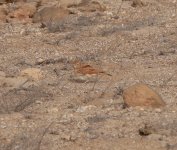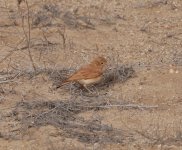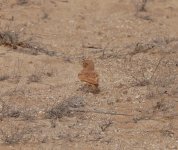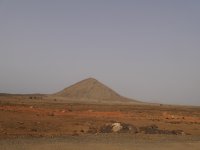MaxesTaxes
Well-known member

Hi everyone,
I saw this bird on the island of Sal in Cape Verde and am having a hard time IDing it.
Using this Wikipedia list, I've narrowed it down to these potential species:
Hopefully someone more familiar with African passerines can help me out here! Please also tell me which features have allowed you to come to your ID, so I can understand which features are important in the identification here.
Thanks in advance,
Max
I saw this bird on the island of Sal in Cape Verde and am having a hard time IDing it.
Using this Wikipedia list, I've narrowed it down to these potential species:
- Luscinia megarhynchos (common nightingale)
- Curruca deserti (African desert warbler)
- Iduna calligata (booted warbler)
- Ammomanes cincturus (bar-tailed lark)
Hopefully someone more familiar with African passerines can help me out here! Please also tell me which features have allowed you to come to your ID, so I can understand which features are important in the identification here.
Thanks in advance,
Max







